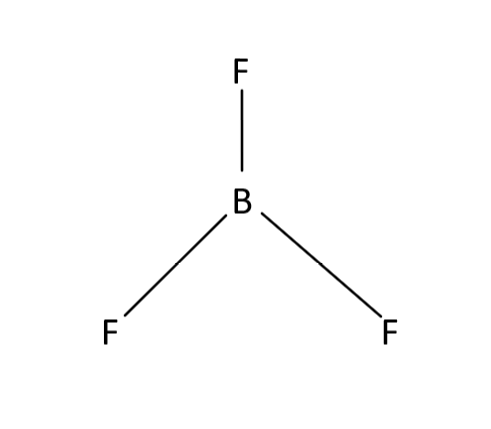
Geometry of
A: Trigonal planar
B: Pentagonal
C: Linear
D: Tetrahedral
Answer
502.8k+ views
Hint: VSEPR theory is used to predict the geometry of individual molecules from the number of electron pairs surrounding the central atom. VSEPR theory is valence shell electron pair repulsion theory.
Complete step by step solution:

So our answer to this question is option A that is Trigonal planar.
Additional information: VSEPR theory was unable to explain the exact shape of molecules in many cases. Taking direction of electron pairs doesn’t seem to be very rational.
To explain the concept of shapes of molecules clearly hybridization was introduced. It involves intermixing of two or more atomic orbitals of slightly different energies but of the same atom so that a redistribution of energy takes place between them resulting in the formation of an equal number of new orbitals which are called hybrid orbitals which will have the same energy, size and shape.
For molecules or ions having regular geometry, change in electronegativity of the central atom or the surrounding atom has no effect on the bond angle.
The actual structure is in between all the contributing structures and is called resonance hybrid. The different individual structures are called resonating structures or canonical forms. This phenomenon is called resonance.
Note: Different compounds have different geometry according to the number of lone pair and bond pair. So remember the number of bond pairs and lone pairs for which different geometries of compounds are formed.
Complete step by step solution:

So our answer to this question is option A that is Trigonal planar.
Additional information: VSEPR theory was unable to explain the exact shape of molecules in many cases. Taking direction of electron pairs doesn’t seem to be very rational.
To explain the concept of shapes of molecules clearly hybridization was introduced. It involves intermixing of two or more atomic orbitals of slightly different energies but of the same atom so that a redistribution of energy takes place between them resulting in the formation of an equal number of new orbitals which are called hybrid orbitals which will have the same energy, size and shape.
For molecules or ions having regular geometry, change in electronegativity of the central atom or the surrounding atom has no effect on the bond angle.
The actual structure is in between all the contributing structures and is called resonance hybrid. The different individual structures are called resonating structures or canonical forms. This phenomenon is called resonance.
Note: Different compounds have different geometry according to the number of lone pair and bond pair. So remember the number of bond pairs and lone pairs for which different geometries of compounds are formed.
Recently Updated Pages
Express the following as a fraction and simplify a class 7 maths CBSE

The length and width of a rectangle are in ratio of class 7 maths CBSE

The ratio of the income to the expenditure of a family class 7 maths CBSE

How do you write 025 million in scientific notatio class 7 maths CBSE

How do you convert 295 meters per second to kilometers class 7 maths CBSE

Write the following in Roman numerals 25819 class 7 maths CBSE

Trending doubts
State and prove Bernoullis theorem class 11 physics CBSE

What are Quantum numbers Explain the quantum number class 11 chemistry CBSE

Write the differences between monocot plants and dicot class 11 biology CBSE

1 ton equals to A 100 kg B 1000 kg C 10 kg D 10000 class 11 physics CBSE

State the laws of reflection of light

In northern hemisphere 21st March is called as A Vernal class 11 social science CBSE




